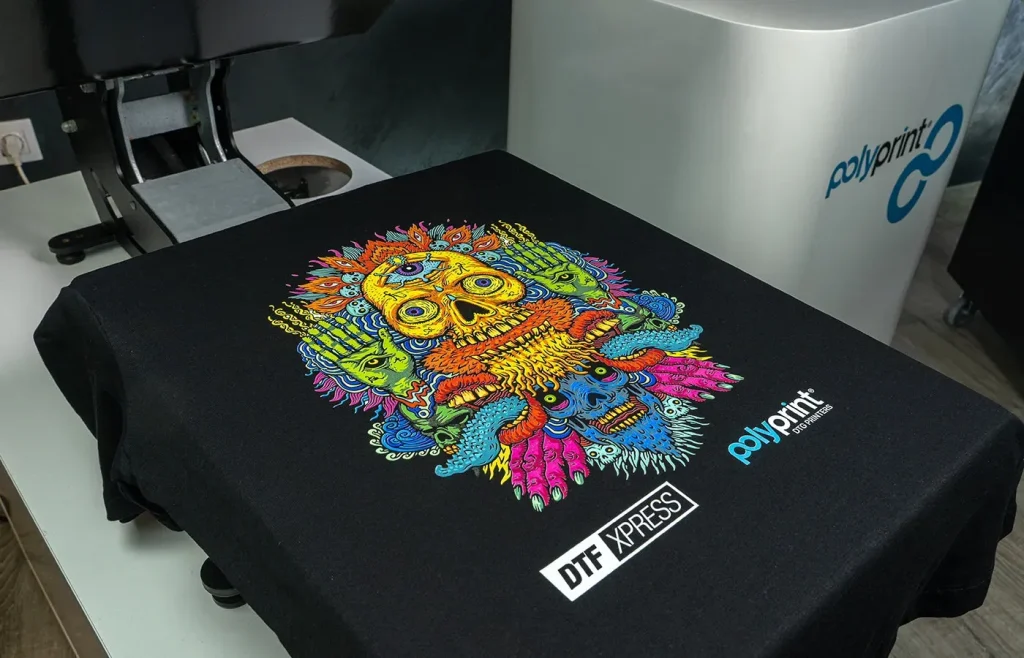DTF printing, or Direct-to-Film printing, is transforming the fashion industry with its innovative approach to design and production. By harnessing advanced technology, this printing method allows for vibrant, high-resolution images to be transferred onto a wide array of fabrics with exceptional durability and ease. In an age where sustainable fashion practices are becoming essential, DTF printing stands out as an eco-friendly option that reduces waste and utilizes water-based inks. The advantages of DTF printing extend beyond just quality, providing cost-effective solutions that enable custom fashion businesses to thrive. As we dive deeper into this revolutionary technique, you’ll discover how DTF printing is set to reshape the very fabric of fashion.
Known as direct-to-film printing, DTF technology represents a cutting-edge change in textile production, optimizing the way designers bring their visions to life. This method excels in versatility and efficiency, allowing brands to create unique, custom fashion pieces that resonate with modern consumer demands. With advancements in fashion technology, the adoption of DTF printing aligns perfectly with the ongoing trend towards sustainable production practices. The ease of use and high-quality output make DTF printing an attractive option for both startups and established brands looking to innovate. Explore how this printing technique is not only elevating fashion aesthetics but also promoting more responsible approaches to apparel manufacturing.
Understanding the Basics of DTF Printing
DTF printing, or Direct-to-Film printing, is an innovative textile printing technique that uses a specialized film to transfer vibrant designs directly onto garments. This process stands out for its capability to create high-quality images that not only pop with color but also maintain exceptional detail and integrity across various fabric types. Unlike traditional methods such as screen printing, which requires numerous steps and setups, DTF printing streamlines the workflow, allowing for quick adaptations to design trends—an essential feature in the fast-paced fashion industry.
Additionally, DTF printing’s compatibility with a wider range of fabrics, from natural fibers like cotton to synthetic blends, significantly broadens its application. This versatility enables designers to experiment with different textures and styles, prompting a surge in custom fashion items tailored to individual customer preferences. As a result, the technique fosters creativity among fashion designers while also appealing to consumers who seek unique, personalized garments.
Frequently Asked Questions
What are the benefits of DTF printing in the fashion industry?
DTF printing offers several benefits in the fashion industry, including versatility, cost-effectiveness, quality durability, and sustainability. It allows for vibrant prints on various fabrics, making it ideal for custom fashion. Additionally, DTF minimizes waste and often uses water-based inks, aligning with sustainable fashion practices.
How does DTF printing compare to traditional printing methods?
Compared to traditional methods like screen printing and direct-to-garment (DTG), DTF printing enhances efficiency and quality. It produces highly detailed, durable prints while being more affordable for startups, significantly reducing setup costs and turnaround times in the fast-paced fashion market.
Is DTF printing suitable for sustainable fashion initiatives?
Yes, DTF printing is suitable for sustainable fashion initiatives as it generates less waste and typically uses environmentally friendly, water-based inks. This aligns with the industry’s shift towards eco-conscious production practices, helping fashion brands reduce their ecological footprint.
What types of fabrics can be used with DTF printing?
DTF printing is incredibly versatile and can be used on a wide range of fabrics, including cotton, polyester, and fabric blends. This flexibility makes it an excellent choice for small businesses and designers looking to produce diverse custom fashion items.
Can DTF printing help fashion brands meet consumer demand for customization?
Absolutely! DTF printing allows fashion brands to quickly produce high-quality, customized designs that cater to consumer preferences. This adaptability empowers brands to stay competitive by responding swiftly to trends in the custom fashion market.
What is the future outlook for DTF printing in the fashion industry?
The future of DTF printing in the fashion industry looks bright, with advancements expected in print quality and efficiency. As consumer demand grows for ethical and personalized products, DTF printing will play a critical role in transforming production practices and enhancing creative possibilities for designers.
| Key Points | Description |
|---|---|
| DTF Printing Definition | A cutting-edge textile printing technique using coated films to transfer vibrant designs onto garments. |
| Versatility | Allows printing on a wide range of fabrics, meeting consumer demand for custom fashion items. |
| Cost-Effectiveness | Lower setup costs and reduced waste lead to better profit margins for businesses, |
| Quality and Durability | Produces high-resolution, long-lasting prints that resist fading and cracking after washes. |
| Sustainability | Employs eco-friendly materials and practices, reducing waste and supporting responsible production. |
| Adoption by Brands | Major brands are integrating DTF printing to enhance production efficiency and respond to market trends. |
| Future Outlook | Advancements in technology and a shift towards sustainable fashion highlight DTF’s pivotal role in the future of apparel. |
Summary
DTF printing is revolutionizing the fashion industry by introducing a highly versatile and efficient printing method that elevates the quality and sustainability of apparel. With its ability to produce detailed and enduring designs on various fabrics, DTF technology meets the growing demand for custom fashion. Moreover, it offers cost-effective solutions for startups and established brands alike, enabling them to remain competitive in an ever-evolving market. As sustainability becomes increasingly crucial, DTF printing stands out as an eco-friendly alternative, making it a key player in transforming production practices. By embracing DTF technology, the fashion industry can not only satisfy consumer preferences for personalization but also contribute positively to the environment.

